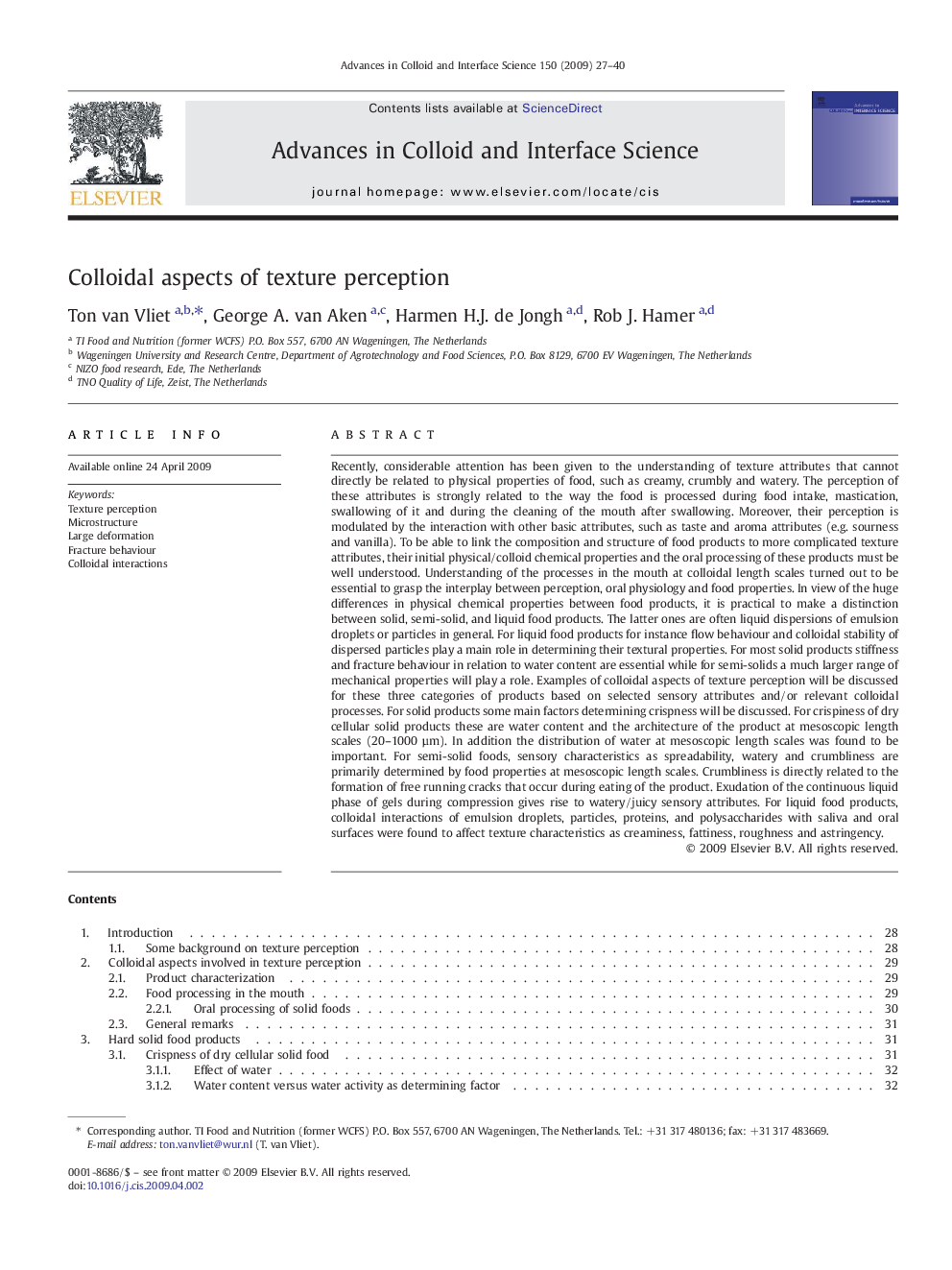| کد مقاله | کد نشریه | سال انتشار | مقاله انگلیسی | نسخه تمام متن |
|---|---|---|---|---|
| 591143 | 878953 | 2009 | 14 صفحه PDF | دانلود رایگان |

Recently, considerable attention has been given to the understanding of texture attributes that cannot directly be related to physical properties of food, such as creamy, crumbly and watery. The perception of these attributes is strongly related to the way the food is processed during food intake, mastication, swallowing of it and during the cleaning of the mouth after swallowing. Moreover, their perception is modulated by the interaction with other basic attributes, such as taste and aroma attributes (e.g. sourness and vanilla). To be able to link the composition and structure of food products to more complicated texture attributes, their initial physical/colloid chemical properties and the oral processing of these products must be well understood. Understanding of the processes in the mouth at colloidal length scales turned out to be essential to grasp the interplay between perception, oral physiology and food properties. In view of the huge differences in physical chemical properties between food products, it is practical to make a distinction between solid, semi-solid, and liquid food products. The latter ones are often liquid dispersions of emulsion droplets or particles in general. For liquid food products for instance flow behaviour and colloidal stability of dispersed particles play a main role in determining their textural properties. For most solid products stiffness and fracture behaviour in relation to water content are essential while for semi-solids a much larger range of mechanical properties will play a role. Examples of colloidal aspects of texture perception will be discussed for these three categories of products based on selected sensory attributes and/or relevant colloidal processes. For solid products some main factors determining crispness will be discussed. For crispiness of dry cellular solid products these are water content and the architecture of the product at mesoscopic length scales (20–1000 µm). In addition the distribution of water at mesoscopic length scales was found to be important. For semi-solid foods, sensory characteristics as spreadability, watery and crumbliness are primarily determined by food properties at mesoscopic length scales. Crumbliness is directly related to the formation of free running cracks that occur during eating of the product. Exudation of the continuous liquid phase of gels during compression gives rise to watery/juicy sensory attributes. For liquid food products, colloidal interactions of emulsion droplets, particles, proteins, and polysaccharides with saliva and oral surfaces were found to affect texture characteristics as creaminess, fattiness, roughness and astringency.
Journal: Advances in Colloid and Interface Science - Volume 150, Issue 1, 30 August 2009, Pages 27–40